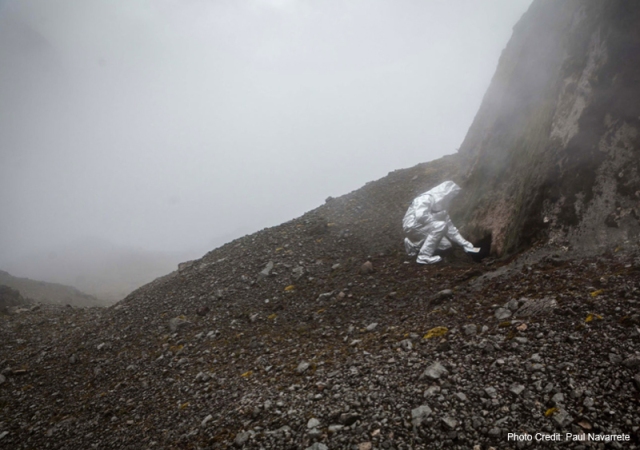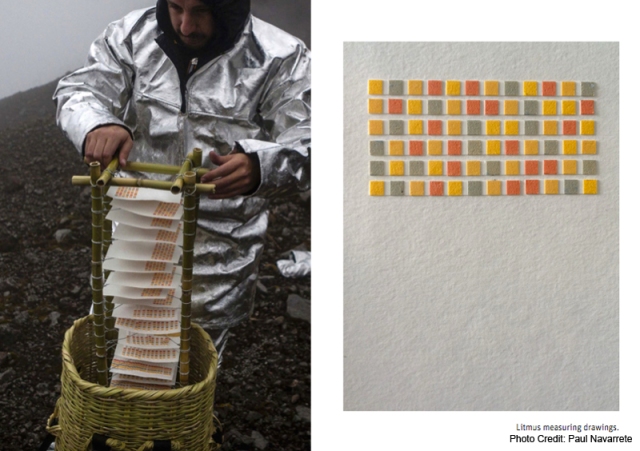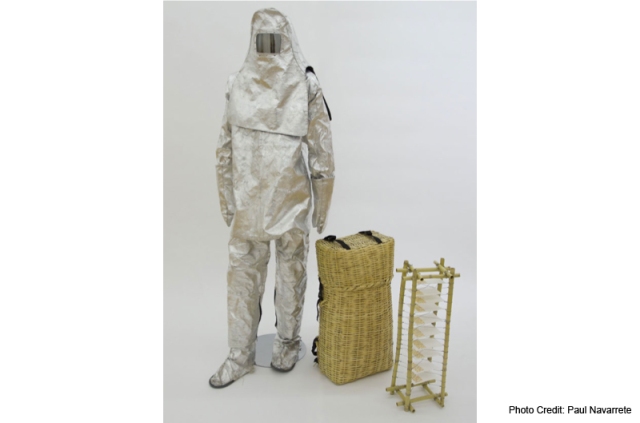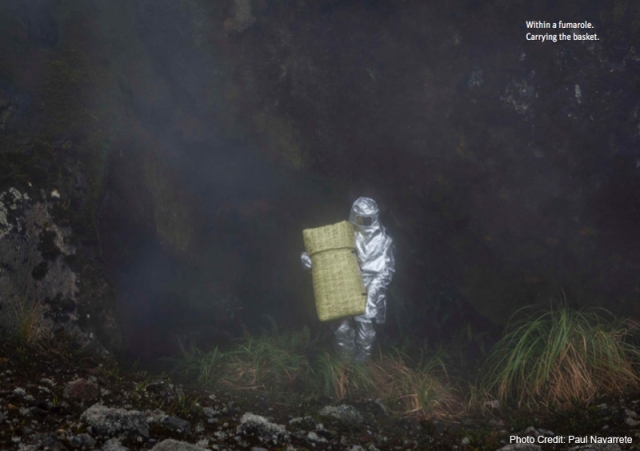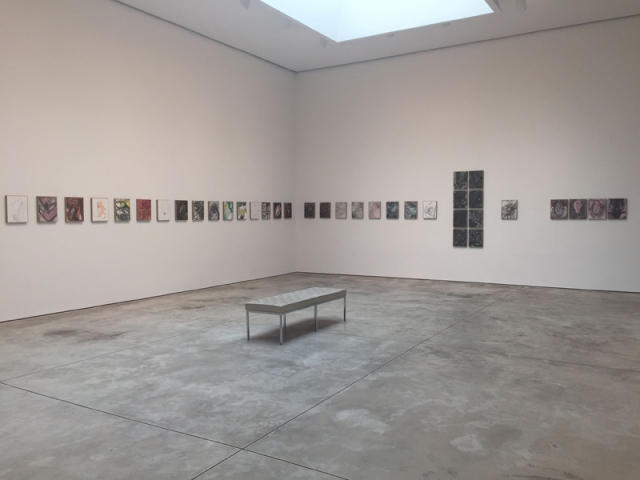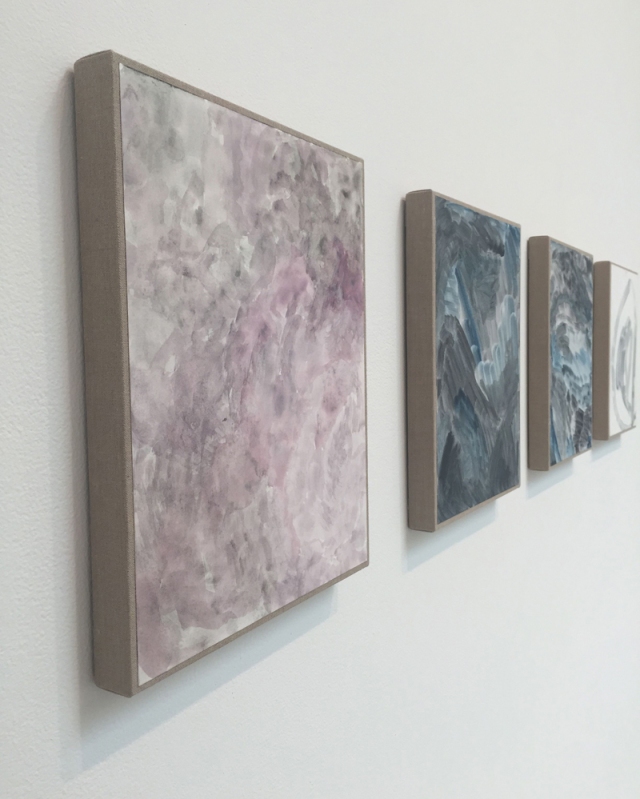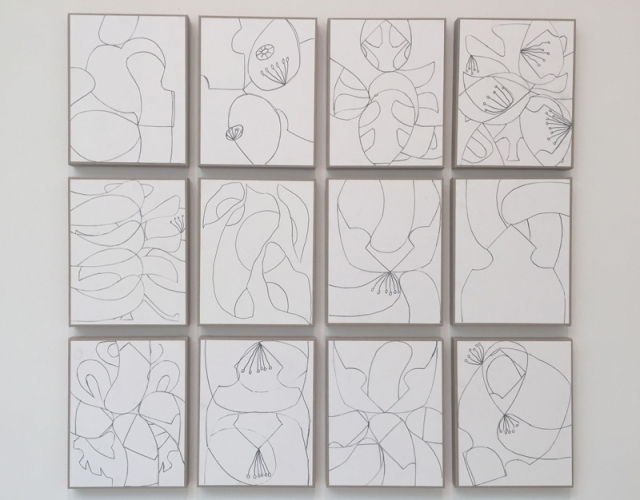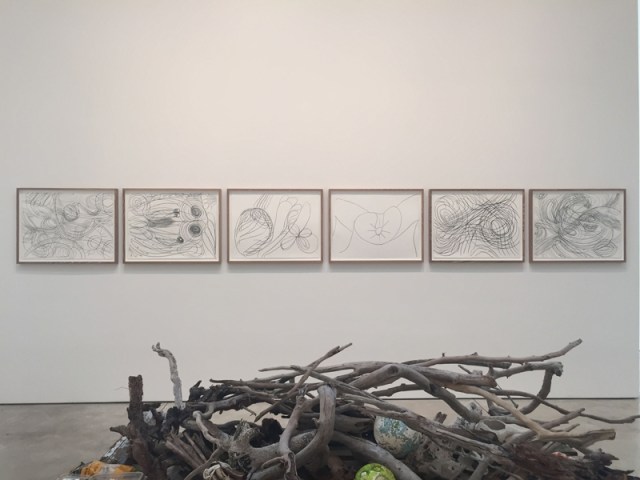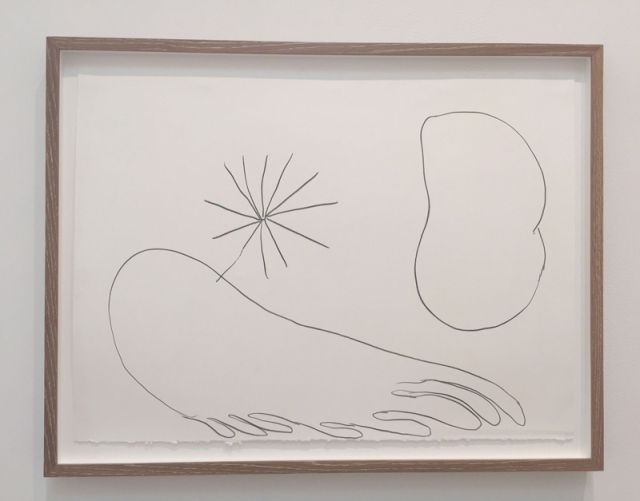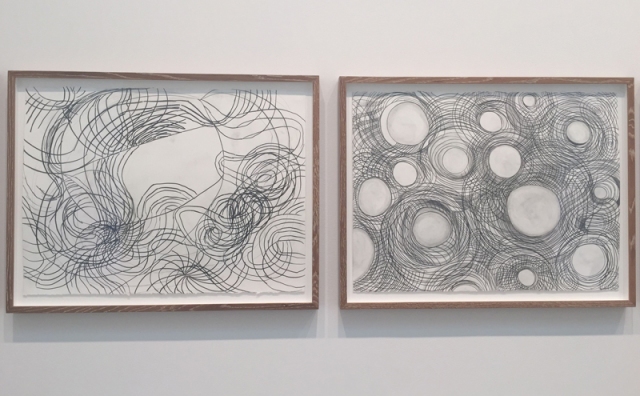Images by Kati Horna, “Bombed! Shelled! Besieged for two years – but Life goes on!,” The Weekly Illustrated, December 3, 1938 [author unknown]. Private collection, New York.
This article was originally published in Whitehot Magazine of Contemporary Art.
—
I had had this event on my calendar for weeks, looking forward to unofficially celebrating the election of our first woman president at the NYU Institute of Fine Arts, coinciding with this wonderful panel discussion on the topic of women photographers in exile. When the night of November 8th turned into the morning of November 9th , and election results were in, there was a different somber attitude across New York City than I’d ever seen before. As shocked and devastated as I was about the results of the election, I decided that I needed to go to the event that I had been looking forward to for so long. When I headed toward the subway to go uptown, the weather outside was grey, drizzly, and dark, and then the energy inside the subway car felt like that of a funeral. But when I got to this panel event put on by Americas Society in the gorgeous ornate colonial building of the NYU Institute of Fine Arts on 5th Avenue, celebrating the work and accomplishments of these incredibly powerful women photographers during wartime during the earlier parts of the 20th century, I was absolutely uplifted and inspired again in a way that I really needed to be at that moment. It was a night of applauding courageous and creative women who broke boundaries, fought for what they believed in and revealed acute insights on dark times with their art and activism.
In the following interview, I sat down with the curators of both the panel discussion and the exhibition, Michel Otayek and Christina De León, to speak about their motivation and inspiration behind shining the spotlight on incredible talents Kati Horna (Hungary), Lee Miller (United States), Grete Stern (Germany), and Margaret Michaelis (Austria-Hungary; Poland), among others. Each have such an incredible story that I have linked to their Wikipedia pages, but in short, from what I’ve gathered, all of these women, in face of the political turmoil of Europe mostly in the 1930s including the rise of Nazi-ism and the Spanish Civil War, fled from and moved between different countries, in regions including Europe, Latin America, Africa, Australia and the U.S., to take action photographing in often treacherous zones. They produced images for everything from mass publications like Vogue, to activist anarchist propaganda in Spain, to art photography which also sometimes included shared common interests in both surrealism and architecture.

Kati Horna, Helen Escobedo, 1960; gelatin silver print, 8 x 8 in. Private collection, Mexico City. © 2005 Ana María Norah Horna y Fernández.
Artifactoid: What led to your focus on Kati Horna? What most intrigued you about her work at the onset, and what were some of the most interesting things you discovered about her through your research putting this show and panel together?
Michel Otayek: Kati Horna’s work during the Spanish Civil War was the subject of my master’s thesis at Hunter College a few years ago. My doctoral dissertation at New York University, currently in progress, takes a more expansive view at her trajectory by means of a comparative analysis between her work, before and after exile, and that of Grete Stern. Early on in my research about Horna, it became clear to me that the meaning of her images was inextricable from their circulation in print. Throughout her career, she produced work specifically for the press. In a way, the true medium of her practice was the printed page, rather than the photographic print. In the pages of print materials, text and design bring to bear on what we are to make of photographic images. At the same time, one must also consider of the specificity of the audience (for whom is this magazine crafted?) when thinking about the sense-making power of images. Our exhibition at Americas Society stays close to these ideas. By presenting a rather eclectic array of print materials in dialogue with a selection of vintage prints, we argue that Horna was keenly aware of how circulation determines meaning—a circumstance she was sometimes able to exploit to great effect.
Christina De León: I was familiar with photographs by Kati Horna’s that were mostly taken in Mexico, however I was not aware of her earlier career in Spain with anarchist publications and through research for this exhibition I came to discover the story of a deeply complex and fascinating photographer. What most intrigued me about Horna’s work were her portraits, specifically of women, because she never relied on sensationalism or angst. Her photographs invited viewers to look deeper into their own reality and served as a reflection of human conditions that encompass all of us. She also displayed an extraordinary depth of field for real-life phenomena generally viewed as banal or otherwise routinely overlooked, which she often captured with a clever sense of humor. Our archival research uncovered an incredibly diverse amount of photographic work, much of which will probably never be seen, because it is not associated with her formal production, but it’s an interesting insight into her practice and how she maintained herself financially. For instance she took wedding photographs, society portraits, images for popular photo-novela magazines, and she took innumerable picture of animals—there are many amazing photographs of cats.
Artifactoid: For the panel presentation, you discussed Horna’s work in the context of several other female photographers from the perspective of mobility and exile, including Lee Miller, Grete Stern, Margaret Michaelis, Marianne (Gast) Goeritz. What would you say is the single most outstanding quality about each of these artists, and what would you characterize as some of the most important threads between them that connect and amplify each of their bodies of work?
MO: I try not to reduce a photographer’s practice to a single, characteristic trait. I think there’s more to Henri Cartier-Bresson, for example, than the decisive moment, or to Robert Capa than battlefront intrepidness. As a remarkably versatile craft, photography gave women such as Kati Horna and Grete Stern a great deal of mobility—across national borders, most obviously, but also across communities of artists, intellectuals, and political activists. There are significant commonalities in the work of these two Jewish women, including the fact that both learned their craft from photographers specializing in advertising work (József Pécsi and Walter Peterhans), which I think gave them a sense of photography as a tool to construct images rather than just document reality. Having lived in Berlin in the final years of the Weimar Republic, both were led to exile by the rise of National Socialism. But whereas Stern left Europe for Argentina in 1936 and was celebrated early on as a pioneer of modernist photography in her adopted country, Horna’s involvement with the anarchist fringe of the Spanish Civil War resulted in a much more precarious exile to Mexico, where she arrived in late 1939—and into which culture she struggled to assimilate for a long time. For a variety of reasons, while Stern has long been part of the canon of modern Argentine photography, Horna’s work continues to be, in my opinion, unfairly underappreciated, even in Mexico.
CDL: It’s difficult to point to a single outstanding quality for each of these photographers, because there are so many! But an interesting commonality among all of them was their ability to seize the opportunities offered by the growing field of photography as a means for personal, political, economic, and artistic emancipation.
Artifactoid: Since you focus on foreign female photographers active in Latin America during the postwar period, I wanted to ask you, what are some of the biggest risks and dangers that these women faced in doing what they were doing, during the time they were doing it? What were some of the biggest challenges they had to overcome that may not be obvious at first glance?
MO: In addition to Horna and Stern, I am also currently researching the work of Bárbara Brändli and Thea Segall, both of whom arrived in Venezuela in the late 1950s. Though a generation younger and having arrived in Latin America two decades later than Horna and Stern, Brändli and Segall also had to carve out their own spaces, as émigrés, in an occupational field still largely dominated by men. Something I find in common among all four is somewhat of an inclination towards the countercurrent. What I mean is that in their trajectories one notices either an engagement with themes ignored by the greater culture or, conversely, a disinterest in some of the topics most conspicuous in the work of other photographers in their adoptive countries. For example, between 1958 and 1964, Grete Stern committed herself to the production of an extensive photographic record of the indigenous communities of the Argentine Great Chaco. Driven to photograph the living conditions of these communities by a personal desire to help improve them, Stern was later greatly disappointed by she perceived as a generalized indifference towards the plight of Argentina’s indigenous cultures by the country’s elites. Meanwhile, it is noteworthy that in Mexico, a country with a robust tradition of folklorist photography, Horna should have remained largely unconcerned with popular and indigenous traditions—themes that have fascinated generations of photographers there, from Hugo Brehme to Graciela Iturbide.

Kati Horna, Un mariage chez les œufs [A Marriage of Eggs], 1936; gelatin silver print. Private collection, Mexico City. ©2005 Ana María Norah Horna y Fernández.
Artifactoid: What are some of the most surprising photographs taken by any of these artists?
MO: Much of Kati Horna’s work speaks to her refined sense of humor. The more of it one looks at, the more sensitive ones becomes to her penchant for infusing even the soberest or most mundane series with an understated layer of comicality. Oftentimes, the humorous streak of her work is not immediately apparent. But on occasion, she produced series that were downright hilarious. Such is the case of a delightful photo essay about city fashions such as bulky mini-skirts, published in July 1962 in the Mexican weekly Tiempo, in which every photograph is taken from the ground looking up, monumentalizing the subjects’ rears while keeping most of their upper bodies invisible. We were not able to include this series in our exhibition at Americas Society but it is certainly one of my favorites. While we are in the subject of personal preferences, one of the works by Bárbara Brändli I like the most is her 1981 book Los páramos se van quedando solos, in which photographs and interview transcripts document the vanishing rural communities and linguistic patterns of the Venezuelan Andes. While not a bold statement of design such as the celebrated 1975 photobook Sistema Nervioso (produced collaboratively by Brändli, John Lange and Roman Chalbaud), Los páramos se van quedando solos manages to convey the melancholic allure of agrarian life in the highlands of Western Venezuela. It is a visually austere but surprisingly sublime photographic pastoral.
CDL: I think I would say I was more inspired than surprised by the photographs taken by these artists. In viewing these images it’s obvious that they did not hold back and you can see the urge to push further and go beyond conventionality. Their work reflects a raw individuality and a complexity that mirrored their lives.
Artifactoid: What were some of the biggest curatorial challenges that you faced when putting this presentation together, and how did you overcome them?
CDL: When organizing an exhibition it’s always a challenge conveying a person’s life’s work through a small and subjective selection of pieces. The goal is always to highlight key moments in a manner that is both engaging and thoughtful, but when you enter an artist’s archive the decision process can be daunting. While our exhibition is focused on Kati Horna’s relationship with the illustrated press, it was important for us to show her professional and personal transitions, as well as her vast networks in Europe and in Mexico, which was something we kept in mind throughout the entire process. Conveying Horna’s images within a framework that spoke to her political ideas, artistic curiosities, and deft eye was crucial to understanding the work we selected. In addition, it was essential to show the circulation of her images and their ever-changing contexts. For us the exhibition design and the display devices played a paramount role in helping to create a dialogue among the images and publications on view. The design was especially important because many of the images were printed in a small format and we wanted visitors to engage with its intimate nature. In many museum and gallery settings there is a tendency to keep a distance from the work, but in this case our intention was for the public to get close and become familiar with Horna’s images and her photographic practice.
Artifactoid: What new meaning, if any, is added to how you view these photographers and their work, in the context of our current, intense global political situation right now? Is there anything about their work that you see in a new light, due to current events? And, which current artists, if any, would you say could be considered modern equivalents of the photographers you focused on in this exhibit/panel?
MO: Perhaps we should put it the other way around. Thinking about what a handful of truly remarkable women were able to do with their cameras as they traversed some of the great upheavals of the 20th century has given me solace as we wake up to a global state of affairs in which, suddenly, it seems acceptable again to disparage minorities, and influential figures feel emboldened to express their contempt for the equal dignity of women. As you know, our panel at the Institute of Fine Arts about women photographers in exile was held the day after the presidential election in the United States. Many of us in attendance were shocked and deeply pained by the election’s results. The timing could not have been more apt for an evening of serene, almost therapeutic conversation about talented, courageous women and the challenges they had to overcome in their own times. Their careers can be looked at from so many different angles that one could establish pertinent comparisons with numerous artists working today. Someone that comes to mind in regards to Kati Horna is Zoe Leonard, whose phantasmagoric photographs were recently on view at an exquisite show at Hauser & Wirth, just a few blocks from Americas Society. Although conceived to operate within very different parameters of public display and circulation, Leonard’s work is concerned with preoccupations that come through in some of Horna’s most personal series: the condition of statelessness and the need to reconstruct personal history.
CDL: In light of the current political unrest, I think its clear that although there has been significant progress, women continue to face many of the same challenges and prejudices they did seventy or eight years ago. Nevertheless, women are still pushing ahead and working to defy stereotypical notions about what kind of work they should or shouldn’t be doing. This defiance has been happening throughout centuries and endures today. The objective for us as a society is to continue to shed light on their work and integrate these women within a greater canonical narrative and not refer to them just as historical anomalies.
View the exhibition of works by Kati Horna, “Told and Untold,” at Americas Society through December 17th, 2016.
About Christina De León and Michel Otayek:
Christina L. De León is a doctoral candidate at the Bard Graduate Center: Decorative Arts, Design History, Material Culture. From 2010 to 2016 she was the associate curator at Americas Society where she worked on modern and contemporary art exhibitions and publications. She co-curated the shows For Rent: Marc Latamie (2012), Cristóbal Lehyt: Iris Sheets (2013), and Told and Untold: The Photo Stories of Kati Horna in the Illustrated Press (2016). She contributed to the catalogue Moderno: Design for Living in Brazil, Mexico, and Venezuela 1940–1978 and has written articles for Review and Americas Quarterly periodicals. De León held previous positions at the Metropolitan Museum of Art and the Cloisters Museum and Gardens. She holds an M.A. from New York University and a B.A. from Hobart and William Smith Colleges.
Michel Otayek is an art historian and doctoral candidate at New York University’s Department of Spanish and Portuguese. He holds a degree in Law from the Universidad Católica Andrés Bello in Caracas, and an M.A. in art history from Hunter College in New York. Otayek’s research addresses the role of practices of visual culture, including photography, in the articulation of discourse. His work is particularly concerned with collaboratively produced cultural artifacts such as illustrated periodicals and photobooks. Currently in progress, Mr. Otayek’s dissertation undertakes a comparative analysis of the work in exile of photographers Kati Horna in Mexico and Grete Stern in Argentina. As part of his interest in foreign female photographers active in Latin America during the postwar period, he is also at work in research projects pertaining the work of Bárbara Brändli and Thea Segall in Venezuela.














